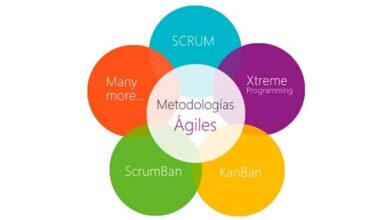What is Eisenhower matrix and How it works and application
Eisenhower Matrix
The Eisenhower Matrix is not a new method of organization. In fact, it was created a long time ago, more precisely at the time of World War II, by then-US Army General Dwight Eisenhower, who was also the 34th President of the United States from 1953 to 1961.
During World War II, Eisenhower was an extremely recognizable general, acting as a strategy for the Allied invasion of Europe. Because he had to make tough decisions about which of the many tasks he should perform at all times, he invented the Eisenhower method, which gained traction and became known worldwide for Stephen Covey’s book “The Seven Habits of Highly Effective People,” published in year 1989.
Thus, the matrix method focuses on prioritizing tasks based on urgency and determining the activities that are important.
How does the Eisenhower Matrix work?
To better understand the Eisenhower Matrix, a sentence said by its creator sums it up: “I have 2 types of problems: urgent and important. What is urgent is rarely important, and what is important is rarely urgent.”
In this way, Eisenhower classified his challenges into two initial categories:
- important and not important;
- urgent and not urgent.
In the conception of the matrix author, the important activities are those that directly impact the goals and results that need to be achieved in the long term. Urgent activities, on the other hand, are those that have an immediate appeal and a defined deadline.
Therefore, the Eisenhower matrix divides priorities into 4 quadrants, as we will see below.
Quadrant 1: important and urgent
In this first quadrant, the crucial tasks for carrying out your work should be included, that is, the high-priority activities that have a deadline to be met. Here, non-compliance can have immediate and long-term consequences. So do them right away!
We know that the HR sector has several daily demands, but you have a vacancy that needs to be filled urgently in the company, for example. Thus, the beginning of the R&S process must immediately pass ahead of some other demands that are not without importance, but that can wait a little longer.
Quadrant 2: important and not urgent
In the second quadrant, we place activities related to their goals, but which have a longer deadline to be accomplished or, even, which do not have a defined deadline.
Therefore, the tasks that are in this quadrant are those that you can brainstorm more deeply and spend more time on, because you will have already performed the activities in the first quadrant.
An example that can be cited is the preparation and development of major company events that will take place over longer periods, requiring more attention, planning and creativity in order for them to be successful.
Quadrant 3: not important and urgent
Amidst the anxiety and the great flow of demands in the work routine, it is common to focus on assignments that emerge as urgent, but which, in fact, are not of great importance at that time.
Therefore, it is important to reflect on which activities should be included in this quadrant. So you, as a member of HR, are conducting an interview with a candidate for a vacancy and the industry phone rings, for example.
Here, the best thing to do is delegate the task of answering calls to someone else at this time, because it can be an urgent phone call, but the most important thing now is to give your interviewee your full attention.
Quadrant 4: not important and not urgent
Generally, the activities that will be placed in this quadrant are those that are often better not to perform. That’s right, they are those tasks that will not add anything to your goals and the results of the organization.
Thus, they can enter this quadrant, for example, playing on social networks at a time when you are super busy with the activities of the first quadrant or participating in meetings of sectors or projects that will have no bearing on your work. So, put them off for later or delete them from your schedule.
How to apply the Eisenhower Matrix in the company?
Now that you know better the method of organizing tasks, check out tips on how to apply this management tool in your company!
1-Use task organization software
Today, with the advancement of technology, you don’t need to draw the Eisenhower Matrix on paper. For that, the market has several online tools and organization software that help to optimize the process .
Through these software, it is possible for the entire team to be aware and aligned with the progress of their individual and collective tasks , such as Trello or even Google Calendar.
The idea of these applications is the same as the Matrix, in which the employee changes the task in the quadrant as they progress in their execution until they are in the completed tasks quadrant. In addition, these tools help in scheduling meetings and other individual or team commitments.
2-Don’t leave Quadrant 2 aside
One of the main mistakes made by those who use the Eisenhower Matrix is to prioritize only Quadrant 1, because the tasks are “urgent”.
But it must be borne in mind that, despite the tasks in quadrant 2 are not high priority, they are still extremely relevant for employees and the company to achieve long-term goals and results.
Therefore, try to organize your time , so that you dedicate a part of it to tasks that must be carried out in a longer period, so that they are not forgotten and end up becoming urgent.
3-Keep the Matrix updated
It’s no use organizing your matrix if you don’t consult it periodically or put in a large number of tasks that you won’t be able to accomplish. Therefore, look at each task quadrant at the start of the day and also at the end of the day, eliminating what has been accomplished and planning a new schedule for the activities that remain.
In addition, it is essential to measure your performance, that is, keep a record of the tasks you managed to accomplish during the day and also during the month. Also, record the amount of time it took you to perform each of the array’s activities.
Thus, both the employee and the manager will be able to identify which tasks the professional has greater ease and assertiveness in and which of them he needs to improve his performance.
Therefore, the manager will be able to use the People Analytics methodology to direct training and development for the employee’s growth.
Also, keeping your employees’ task routine organized is a highly effective management tool at a time when maintaining mental health is so important for the entire team to remain motivated and productive and for the company to grow and maintain itself in times of crisis. .
We know that the accumulation of daily pressures makes the organizational environment a major contributor to mental illness . Thus, the importance of companies dedicating themselves to the maximum in the quantity and organization of demands for each professional and team emerges.




